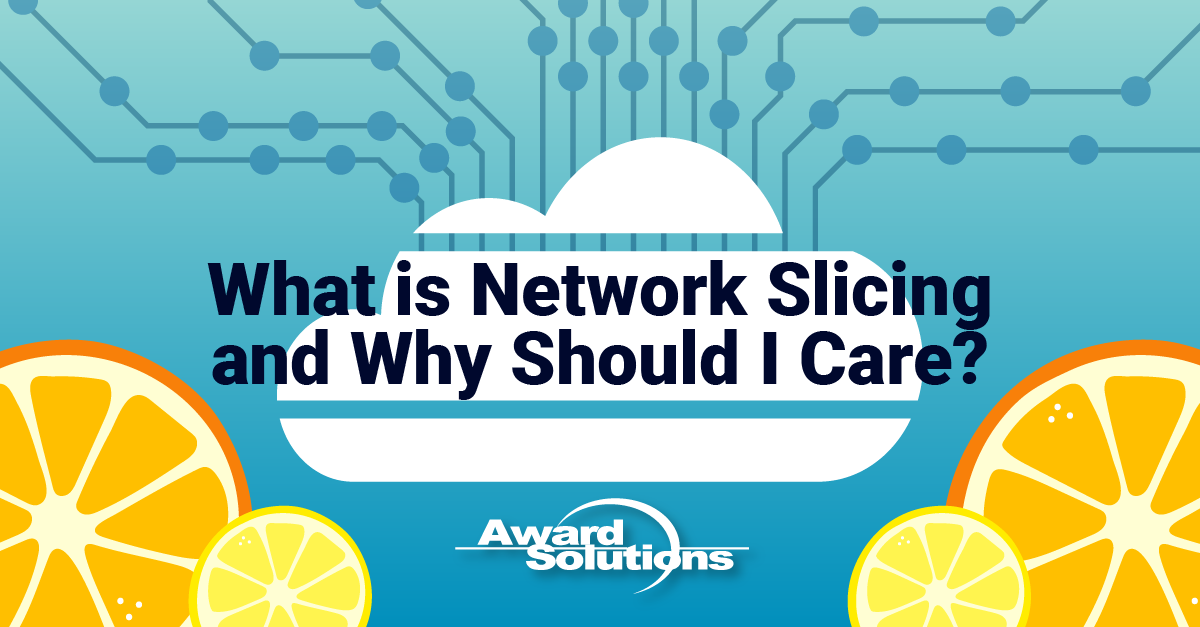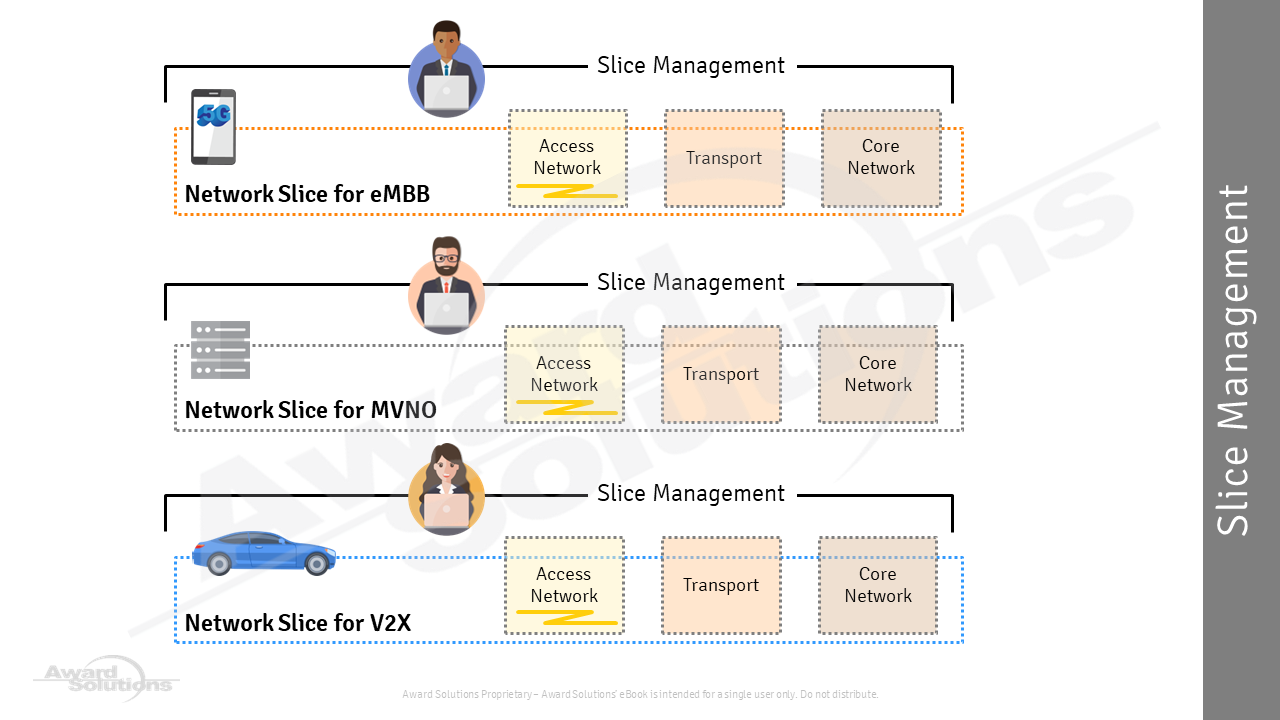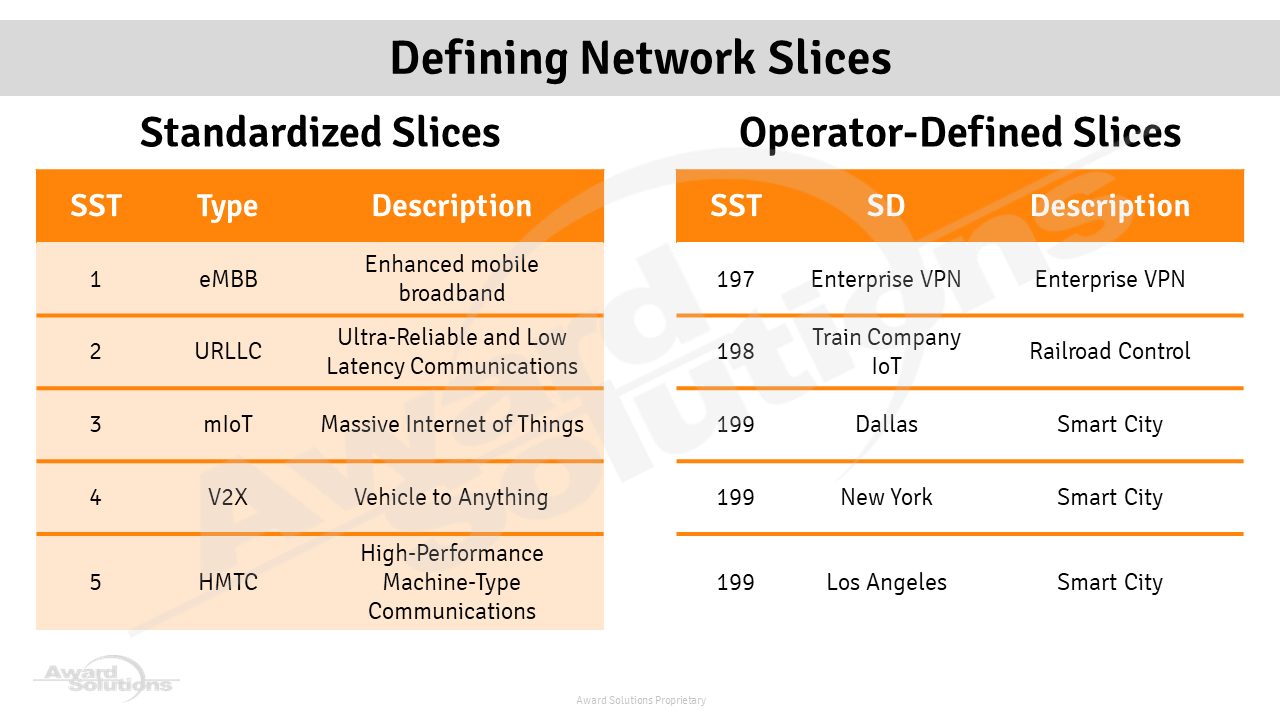
5G networks accommodate many different types of services, from existing Mobile Broadband (MBB) services to newer services like Augmented and Virtual Reality (AR/VR), factory automation, Internet of Things (IoT), and even mission-critical services. These services have distinct and varied performance criteria, and organizing the network to meet these criteria is done efficiently and effectively.
Because a one-size-fits-all network approach doesn’t work for this variety of services with so many different service objectives, network slicing has been established as a foundational capability of the 5G network. Network slicing allows a mobile network operator to organize the 5G network into end-to-end logical networks, or network slices, where each slice can be optimized independently for the service it supports.
As operators evolve to 5G Standalone deployments, they can take advantage of network slicing to help optimize network performance. And as the 5G services landscape grows, network slicing can grow along with it. As a result, anyone involved with 5G networks must add network slicing to understand how networks are designed and deployed.
Network Slicing Benefits
Network slicing allows 5G network operators to optimize service performance by defining, deploying, and managing network slices to meet the needs of their customers and the types of services offered. This ability to optimize part of the overall network according to a kind of service provides several benefits:
- New services can be deployed to attract business beyond their current customers.
- A common network and management infrastructure results in lower costs.
- Different types of network access are supported, allowing traffic to be distributed across 5G and non-3GPP access types (e.g., Wi-Fi).
- Secure and isolated network portions can be defined for private networks.
- Critical infrastructure applications can be supported for different industry verticals.
- Enterprise customers can customize their virtual networks to meet their specific needs.
- Aspects of the network can be isolated within network slices for security and to contain the impact of any failures.
What are Network Slices?
Within the broader context of a network, a single network slice encompasses all aspects of a 5G network for a user’s session with a services network (data network). The slice includes the 5G Core network, the 5G Radio Access Network (RAN), the transport network, and network management, meaning that network slicing is only possible with a complete 5G Standalone (SA) network. Once created, network slices can be monitored and managed independently to ensure that the network slice is meeting service-level performance requirements.

Defining Network Slices
Wireless network standards provide a set of standardized slices that can be used in a subscriber’s home network or while roaming. In addition to these slices, the network operator can create custom slices to meet their own needs and the needs of their customers. A subscriber, like in 4G, is subscribed to services networks, but now this subscription includes the network slice within which the subscriber’s session with a services network is contained.
Slices are identified by a Slice Service Type (SST). There are standardized SSTs for common types of network slices. Standardized SSTs can be used across roaming boundaries. An operator can also define custom slices, which, in addition to the operator-assigned SST, can include a Slice Differentiator (SD). For example, if the operator defines a slice service type for public utilities, it can give each different utility a separate SD value.

Mapping User Data Sessions
Users are not aware of network slices. However, subscribers in an operator’s network use applications on devices to connect to services networks like the internet or operator services networks like the IP Multimedia Subsystem (IMS). These services networks are identified by a Data Network Name (DNN). An IP session to a DNN utilizes the RAN, the transport, and the 5G Core functions entirely within a single network slice. Because of this, when a user is subscribed to a DNN, that DNN is also associated in the user’s subscription with the network slice used to access it.
Conclusions
5G networks are defined to meet various services with differing performance needs. A single network design cannot cost-effectively meet these needs. For network operators to take advantage of new service types, it is critical to use network slicing.
Network slices are end-to-end logical networks within the operator’s network. Each network slice includes resources from the RAN, the 5G Core, and the transport network. Network slices can help efficiently meet performance needs. For example, some slices can be optimized for high throughputs while others can be optimized for low latencies. Network slices can also help isolate some aspects of the network from others, providing fault isolation and increased security.
Network operators can use a mix of standardized slices like eMBB and URLLC and slices customized for their needs. For example, slices supporting private networks can be distinguished from one another using slice differentiators for each private network.
